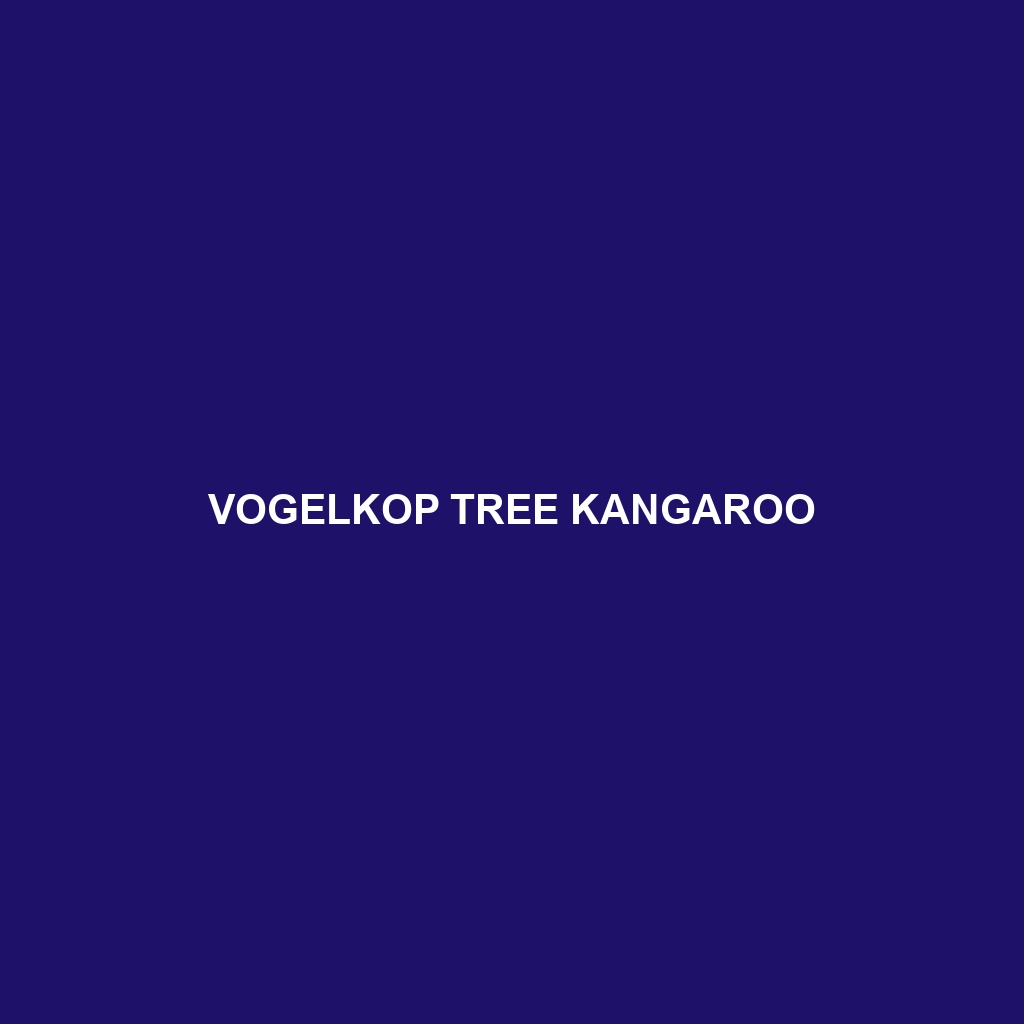Vogelkop Tree Kangaroo: An In-Depth Overview
The Vogelkop Tree Kangaroo (Dendrolagus ursinus) is a remarkable and elusive marsupial native to the dense montane forests of the Vogelkop Peninsula in West Papua, Indonesia. Known for its arboreal lifestyle and striking appearance, this tree kangaroo is a marvel of evolutionary adaptation, showcasing unique traits that distinguish it from its terrestrial relatives.
Physical Characteristics
Size: The Vogelkop Tree Kangaroo is a medium-sized marsupial, with adults typically measuring between 50 to 80 centimeters (20 to 31 inches) in body length, excluding the tail, which can add another 40 to 90 centimeters (16 to 35 inches). They generally weigh between 6 to 14 kilograms (13 to 31 pounds).
Coloration: Their dense, woolly fur is predominantly dark brown to black, often with lighter underparts and a golden or reddish tinge on the limbs and tail. This coloration provides excellent camouflage in their forested habitats.
Special Features: Adapted for life in the trees, they possess strong forelimbs with curved claws, which aid in gripping and climbing. Their hind limbs are robust, allowing for powerful leaps between branches. Their tail is long and prehensile, providing balance and support as they navigate through the canopy.
Behaviors
Social Interactions: Vogelkop Tree Kangaroos are generally solitary creatures, coming together only during the breeding season. They are known for their elusive nature and secretive behavior, spending most of their time high in the trees where they are safe from many predators.
Feeding Habits: Their diet primarily consists of leaves, fruits, and flowers. They are folivorous, meaning they have a specialized digestive system capable of breaking down fibrous plant material. Occasionally, they may also consume insects and small vertebrates.
Ecological Roles: As herbivores, Vogelkop Tree Kangaroos play a critical role in their ecosystem by aiding in seed dispersal and contributing to the health and diversity of their forest environment.
Habitat and Adaptations
Habitat: These marsupials are endemic to the montane and mossy forests of the Vogelkop Peninsula, typically found at elevations ranging from 1,000 to 3,200 meters (3,280 to 10,500 feet). The dense and rugged terrain provides ample food sources and protection.
Adaptations: Their arboreal adaptations are key to their survival. Strong limbs and claws help them climb and forage, while their keen sense of balance allows them to navigate the treetops. Their camouflaged fur helps them blend into their leafy surroundings, reducing the risk of predation.
Conservation Status
The Vogelkop Tree Kangaroo is currently listed as Vulnerable by the International Union for Conservation of Nature (IUCN). They face threats from habitat loss due to logging and agricultural expansion, as well as hunting. Conservation efforts are critical to ensure their survival, focusing on habitat preservation and local community engagement.
Fascinating Fun Facts
Evolutionary Wonders: Tree kangaroos, including the Vogelkop species, are believed to have evolved from terrestrial ancestors similar to modern-day ground kangaroos and wallabies.
Agile Athletes: Despite their relatively slow and deliberate movements in the trees, Vogelkop Tree Kangaroos are capable of making impressive leaps of up to 9 meters (30 feet) between branches.
Unique Reproduction: Like other marsupials, females have a pouch where they carry and nurse their young, called joeys, until they are mature enough to venture out.
By understanding and appreciating the unique attributes of the Vogelkop Tree Kangaroo, we can better appreciate the diversity of life and the importance of conserving these incredible animals and their habitats.
